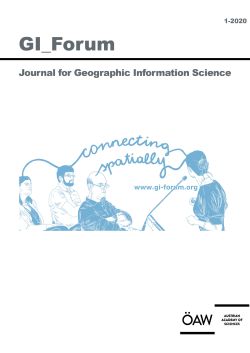
GI_Forum 2020, Volume 8, Issue 1, pp. 15-31, 2020/06/25
Journal for Geographic Information Science

More and more studies are based on freely available social media data. Using microblogs, a midpoint between instant messaging and content production, analyses of urban activities are possible. This paper focuses not only on mapping human activities but also on defining urban function in the city. Using geotagged Twitter data, the research carried out separate spatial and temporal analyses, in conjunction with combined spatio-temporal analyses. Tweets were categorised into six activity groups: Working, Eating, Shopping, Leisure, Home and Education, based on selected keywords. The results show stronger performance for the detection of Leisure, Eating, Shopping and Education activities and less successful performance for Working and Home activities. The first four cluster near the centre of the city, while the rest are scattered all over the city. Moreover, each activity shows its own temporal pattern. This study finds characteristic patterns for everyday activities and shows the possibility of using social media data to define urban function for places where land-use information is not available.
Keywords: geotagged Twitter data, spatial analysis, temporal analysis, urban data, social media